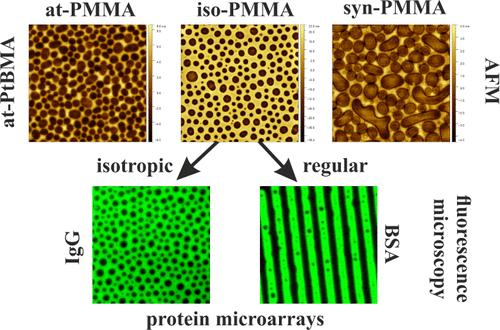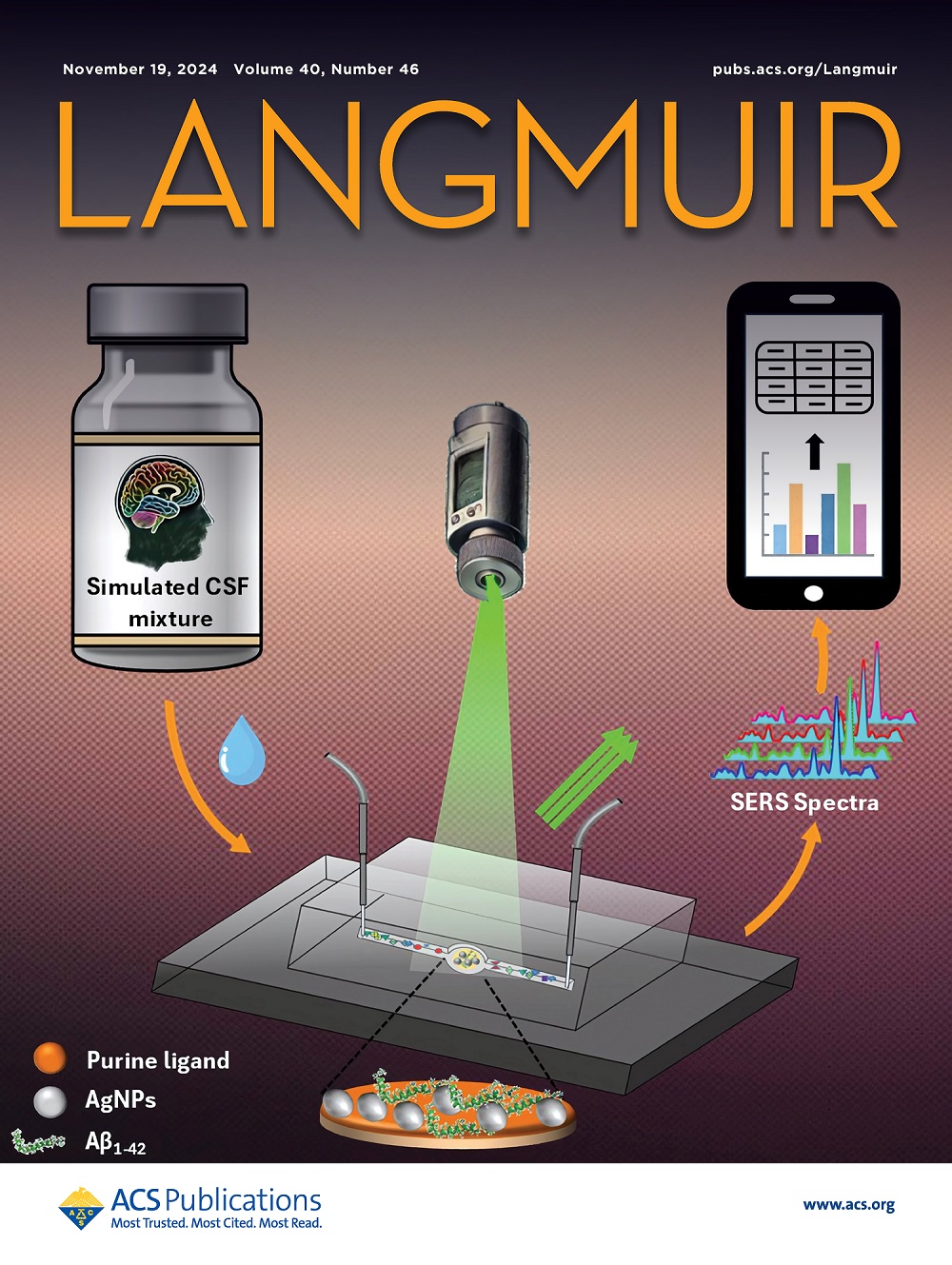Protein Orientation and Polymer Phase Separation Induced by Poly(methyl methacrylate) Tacticity
IF 3.7
2区 化学
Q2 CHEMISTRY, MULTIDISCIPLINARY
引用次数: 0
Abstract
Stereochemistry may affect the physicochemical and biological properties of polymer films that are important for their applications, including substrates for the fabrication of protein microarrays. In this study, we investigated the effect of poly(methyl methacrylate) (PMMA) tacticity on the interaction of polymer thin films with proteins and on the phase separation process in blends with poly(tert-butyl methacrylate) (PtBMA). Thin films of isotactic, atactic, and syndiotactic PMMA were studied for topography, surface chemistry, and protein adsorption. Secondary ion mass spectrometry and contact angle measurements revealed a lower surface exposure of polar ester functional groups for iso-PMMA, resulting in the reduced adsorption of albumin and fibrinogen proteins. We also showed that changes in surface chemistry alter the orientation of proteins adsorbed on iso-PMMA through hydrophobic and electrostatic interactions. In addition, blends composed of PMMA and PtBMA, both of different tacticities, were investigated in terms of protein microarray fabrication. The two-dimensional domain structure was obtained by a phase separation process for at-PtBMA blends prepared on silicon substrates modified with amino-silane. Finally, for an isotropic and regular polymer pattern of iso-PMMA/at-PtBMA, the possibility of protein microarray formation on this blend was demonstrated, showing selective adsorption to PtBMA domains and perfect mirroring of the polymer patterns.

求助全文
约1分钟内获得全文
求助全文
来源期刊

Langmuir
化学-材料科学:综合
CiteScore
6.50
自引率
10.30%
发文量
1464
审稿时长
2.1 months
期刊介绍:
Langmuir is an interdisciplinary journal publishing articles in the following subject categories:
Colloids: surfactants and self-assembly, dispersions, emulsions, foams
Interfaces: adsorption, reactions, films, forces
Biological Interfaces: biocolloids, biomolecular and biomimetic materials
Materials: nano- and mesostructured materials, polymers, gels, liquid crystals
Electrochemistry: interfacial charge transfer, charge transport, electrocatalysis, electrokinetic phenomena, bioelectrochemistry
Devices and Applications: sensors, fluidics, patterning, catalysis, photonic crystals
However, when high-impact, original work is submitted that does not fit within the above categories, decisions to accept or decline such papers will be based on one criteria: What Would Irving Do?
Langmuir ranks #2 in citations out of 136 journals in the category of Physical Chemistry with 113,157 total citations. The journal received an Impact Factor of 4.384*.
This journal is also indexed in the categories of Materials Science (ranked #1) and Multidisciplinary Chemistry (ranked #5).
 求助内容:
求助内容: 应助结果提醒方式:
应助结果提醒方式:


